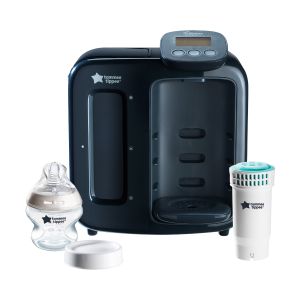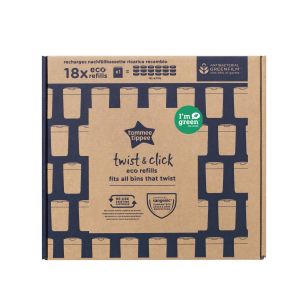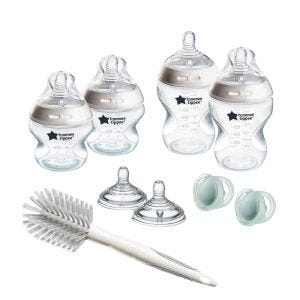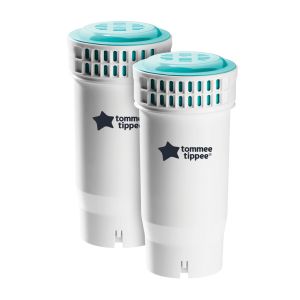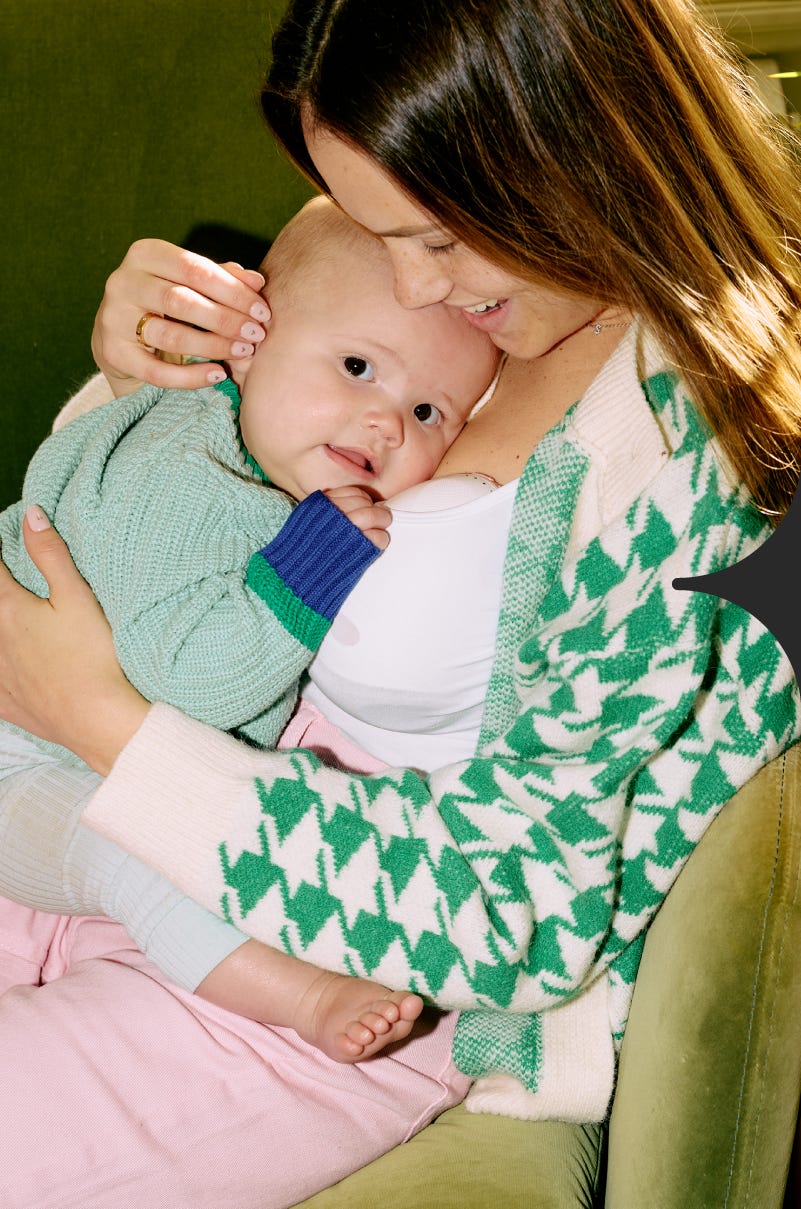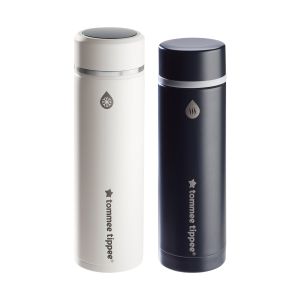
Hints & Tips
Whenever you choose to introduce bottle feeding, it’s best for both baby and you to do it gradually.
Tips for moving from breastfeeding to bottle feeding
What are the best ways to introduce the bottle?
Whenever you choose to introduce bottle feeding, it’s best for both baby and you to do it gradually. You don’t want your breasts to be full of milk and it will take a bit of time for your body to adjust. And you won’t want a sudden change to be a shock to baby either, so start slowly. Start with substituting one breastfeeding session with a bottle once a day and build from there. Once you feel your body has regulated to this reduction in demand you can then reduce another breastfeed.
If you want to start bottle feeding so that your baby gets the benefits of your breast milk while you’re away at work, you can express your breast milk to feed in a bottle later. Allow yourself plenty of time for baby to accept the bottle before you return to work. Start to introduce your baby to a bottle at least a few weeks before you return to work. Give yourself as much time as you can, don’t try to do it all at the last minute – you don’t need the extra stress.
Giving your baby their first bottle
Babies sometimes take a bit of time to get the hang of bottle feeding, because they need to use a different sucking action from breastfeeding.
It can help to try your baby on their first bottles when they’re happy and relaxed, not when they’re making a fuss for their dinner.
Also, breastfed babies are used to having mum on demand and can smell your milk, so it may help if you have someone else to try giving them their first bottles.
Choose a bottle with a teat that feels and behaves as much like a breast as possible. Tommee Tippee teats are shaped, move and stretch just like mum’s breast, because that’s what babies like.
When feeding your baby from a bottle, keep the teat full of milk to reduce the amount of air that baby takes in with their milk.
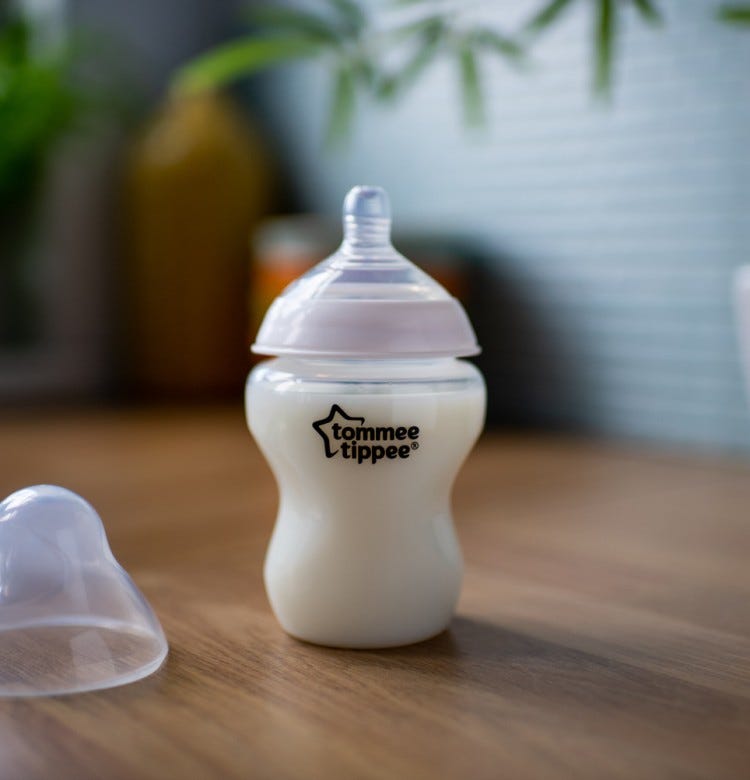
When should I start introducing the bottle?
In the UK, the NHS recommends breastfeeding your baby exclusively (giving your baby no other food or drink) for around the first 6 months.
It can take time to establish a happy breastfeeding routine, so most healthcare organisations recommend you hold off trying to bottle feed for the first four weeks. But if baby is having trouble latching on or you’re having trouble producing enough milk, you may need to adapt. Try to get some breastfeeding support to help, getting the latch correct is essential. Like all mums, you’re just trying to do the best for your baby.
Feeding breast milk in a baby bottle
Some babies are quicker to take to a baby bottle if they’re drinking mum’s breast milk rather than formula. You can even drip a little breast milk on the teat to tempt them.
You can express your breast milk using a breast pump, often straight into a bottle or pouch that you or someone else can use to feed your baby later. Expressing is a great option if you want to continue giving your baby the benefit of your breast milk when you (and your boobs) are busy. If you do choose to express your breast milk, try to do it at a similar time of day to breastfeeding.
If possible, ask your partner or someone you trust to give those first few bottles of breast milk so that your baby isn’t distracted by their usual supply being nearby.
As baby always enjoys breast milk at body temperature, it’s a good idea to gently warm milk in a bottle using a bottle warmer or water bath before feeding.
It’s best not to heat breast milk in a microwave or boil it. It will destroy all the good stuff and you can create hot spots that could burn your baby’s mouth.
FAQs
How can I make sure bottle feeding is safe for my baby?
Always make sure your wash your hands and keep everything associated with feeding baby clean. That means washing and sterilising any breast pumps, bottles and teats.
If you’re expressing breast milk, make sure any storage containers are clean and sterile and store and use carefully.
|
Method of storing milk |
Use within |
Remember |
|
Room temperature <25°C |
6 hours |
|
|
Refrigerated at 5-10°C |
3 days |
|
|
Refrigerated at 0-4°C |
6 days |
|
|
Refrigerated before freezing |
24 hours |
|
|
Once frozen |
6 months |
|
|
Defrosted before feeding |
12 hours |
Will my baby be okay switching from breast to bottle?
It can be confusing for little mouths switching between breast and bottle and parents are often concerned about ‘nipple confusion’. Using the right baby bottle can help.
All Tommee Tippee teats are designed to mimic the stretch, flex and natural movement of mum’s breast, so they’re as breast like as they can be. With a little love and patience, your baby will soon get the hang of bottle feeding.
My baby won’t take a bottle
If your baby is finding it difficult to feed from a bottle, try:
- Bottle feeding with some expressed breast milk. Squeeze some breast milk onto the teat to give baby a taste
- Warming the milk to body temperature before feeding
- Letting your partner or someone else bottle feed your baby. They may be more likely to accept a bottle if they can’t see or smell you or your breast milk.
- Be prepared to try out different teats and bottles. Your baby may prefer a particular shape and texture.
Be patient. If bottle feeding isn’t working right now, take a break and try again when baby’s more relaxed, or in a few day’s time.
Can you overfeed your baby?
Generally your baby will let you know that they are full, by pushing away the teat, or by falling asleep (just like you after a big lunch). But some babies can drink more than is good for them. They’ll become uncomfortable, may burp a lot and spit up milk more often as well as gaining weight too quickly.
Always get advice from a healthcare professional if you’re worried about any aspect of your baby’s feeding or health.

